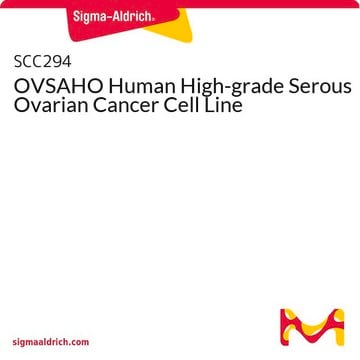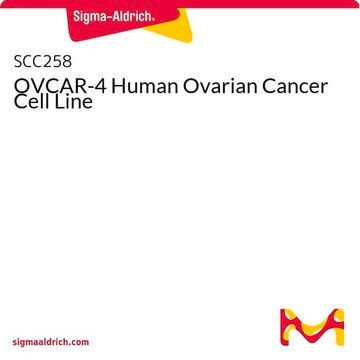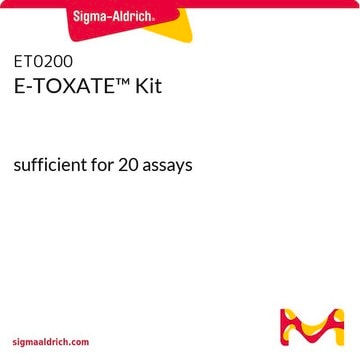SCC257
OVCAR-3 Human Ovarian Cancer Cell Line
About This Item
Productos recomendados
descripción
Cell line type: Cancer Cells
técnicas
cell culture | mammalian: suitable
Descripción general
OVCAR-3 is a high-grade serous ovarian adenocarcinoma cell line established from a patient refractory to cisplatin, however the cell line remains sensitive to a variety of chemotherapeutic drugs (2). OVCAR-3 cells demonstrate increased glutathione content (3) and express the Wilms Tumor 1 protein (WT1), a marker of advanced serous ovarian carcinoma (4). OVCAR-3 cells are characterized by migration/invasion ability and are tumorigenic in nude mice (5). The OVCAR-3 cell line is well-established and one of the most highly-cited model systems for ovarian carcinoma.
Source:
OVCAR-3 was established from ascitic fluid from a 60-year-old patient with ovarian cancer refractory to cisplatin treatment (2).
References:
1. Nat Rev Disease Primers 2016; 2:16061.
2. Cancer Res 1997; 57:850—856.
3. Proc Natl Acad Sci USA 1992; 89:3070-3074.
4. BMC Cancer 2006; 6:90.
5. Gynecol Oncol 2015;138(2):372-377.
Aplicación
Calidad
- Each vial contains >=1X106 viable cells.
- Cells are tested negative for infectious diseases by a Human Essential CLEAR panel by Charles River Animal Diagnostic Services.
- Cells are verified to be of human origin and negative for inter-species contamination from rat, mouse, chinese hamster, Golden Syrian hamster, and non-human primate (NHP) as assessed by a Contamination CLEAR panel by Charles River Animal Diagnostic Services.
- Cells are negative for mycoplasma contamination.
- Each lot of cells is genotyped by STR analysis to verify the unique identity of the cell line.
Almacenamiento y estabilidad
Cláusula de descargo de responsabilidad
Código de clase de almacenamiento
10 - Combustible liquids
Clase de riesgo para el agua (WGK)
WGK 1
Punto de inflamabilidad (°F)
Not applicable
Punto de inflamabilidad (°C)
Not applicable
Certificados de análisis (COA)
Busque Certificados de análisis (COA) introduciendo el número de lote del producto. Los números de lote se encuentran en la etiqueta del producto después de las palabras «Lot» o «Batch»
¿Ya tiene este producto?
Encuentre la documentación para los productos que ha comprado recientemente en la Biblioteca de documentos.
Nuestro equipo de científicos tiene experiencia en todas las áreas de investigación: Ciencias de la vida, Ciencia de los materiales, Síntesis química, Cromatografía, Analítica y muchas otras.
Póngase en contacto con el Servicio técnico






